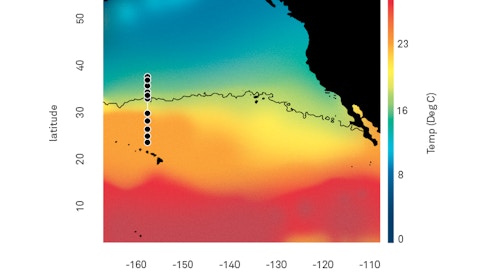Modeling Ocean Ecosystems: The 2016 Gradients Cruise

Merge models with field observations, warm water with cold, low-nutrient waters with high, the North Pacific Subtropical Gyre with the subpolar gyre, and the marine picocyanobacteria Prochlorococcus with Synechococcus — and the result is the 2016 Gradients Cruise.
From late April to early May, oceanographers onboard the research vessel Ka`imikai-O-Kanaloa, led by Ginger Armbrust and Angelicque White, worked to test the latest ocean ecosystems model from Mick Follows. All three are Simons Collaboration on Ocean Processes and Ecology (SCOPE) Investigators. Follows is a professor in the marine biogeochemical modeling group called the Darwin Project at the Massachusetts Institute of Technology. The Darwin Project — funded by the Simons Foundation, the Gordon and Betty Moore Foundation, the National Science Foundation and NASA — works to develop a large-scale global model for marine microbial communities based on models of ocean circulation, biogeochemistry and the associated communities of plankton.
Steaming north from its operational base in Honolulu, the ship, with its mixed team of experimentalists and mathematical modelers, traveled out of the warmer, nutrient-sparse subtropical gyre and into the cooler, productive waters of the subpolar gyre. The most interesting location for the scientists, however, was the transition zone, where the two gyres come together.


